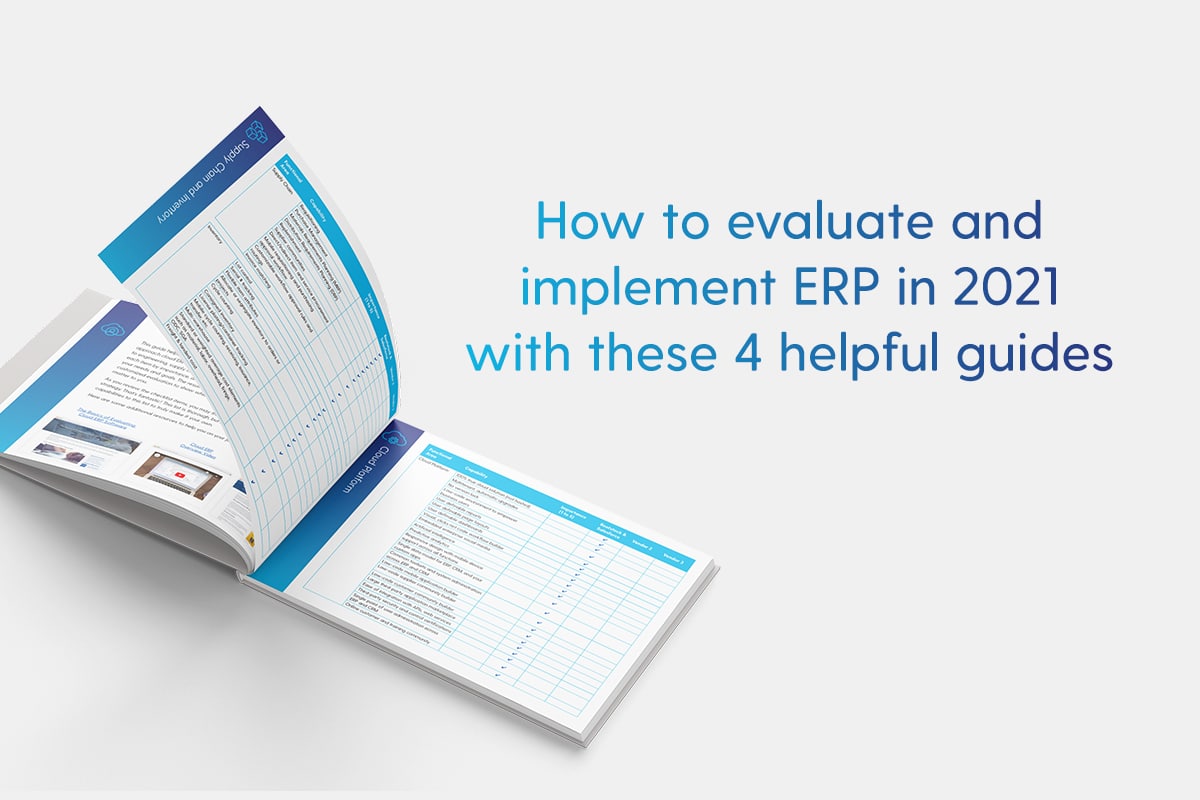
Now, manufacturers are facing a tough choice as they look forward to 2021: continue to struggle or transform how you operate. For those looking to modernize, improve, and finally take a customer-first approach, this blog post is for you! We’ve curated a set of guides to help you better understand your modernization goals, and then evaluate, select, and implement the best Cloud ERP to fit your needs.
Making the Move to Cloud ERP in 2021
Although the pandemic may have given you the final shove, the fundamental reasons you’ve considered moving to Cloud ERP haven’t changed. Your corporate goals, what you require, your business strategy; it’s all underlying the need to modernize your operations. The competitive side, however, is one area that has become even more aggressive, and customers are taking notice. So, as you create your plan for Cloud ERP, first consider why you’re embarking on this effort.
Watch “Will 2021 be the year you move to Modern Cloud ERP?”, a new on-demand webinar designed specifically for those just starting their Cloud ERP journey. A team of experts explore in detail the differences between true and hosted Cloud ERP, offer tips on creating your ERP transformation strategy, and explain why no-code/low-code ERP is a must-have in 2021. The team also lists the top mistakes companies frequently make so you can avoid these potential roadblocks.
Evaluating Cloud ERP Solutions
Once your project is underway and your goals are clear, it’s time to start evaluating potential Cloud ERP solutions against your unique requirements. No two companies have the same operations, and neither will they have the same goals, needs, and expectations. Only then can you effectively gauge and assess the various products and capabilities of individual vendors.
Download the “Cloud ERP Evaluation Guide” help you determine the right questions to ask based on your unique needs. This guide includes the obvious focus on operations but is structured by functional area to extend from sales to supply chain. This approach ensures your Cloud ERP selection contributes to your overall business advantage, not just compartmentalized or marginal improvements. It also elevates your evaluation from a feature-by-feature comparison to uncover which vendor can truly help you meet your goals.
The Cloud ERP evaluation guide can be a simple checklist or a thorough score sheet to compare solutions directly and quantitatively. Either way, it will narrow your list of potential vendors down to the one that is right for your situation.
Implementing Cloud ERP
With a Cloud ERP solution selected, your next step is to get your organization ready for implementation. This includes everything from change management and executive support to the technical deployment, and everything in between. But, if you’ve taken the time consider and refine your goals based on the above guides, these activities should fall into place.
Listen to this Enterprise Times podcast to hear everything you need to know about selecting and implementing a Cloud ERP solution. The half-hour podcast recaps the fundamentals behind any Cloud ERP modernization, but then explains how you can get your selected solution implemented quickly and effectively. You’ll hear tips for aligning your business strategy with your Cloud ERP selection, best practices on who should be involved in the implementation process, and why you might want to considering asking customers to help. The podcast also offers practical advice for getting from deployment to benefits, and for choosing the right implementation partner to help along the way.
This podcast is more like a master class in Cloud ERP implementation, with deep, experienced insights based on hundreds of deployments across more than 30 years of experience.
Critical Implementation Success Factors
If we could boil all of this advice into a very short guide, it would be the three points in this “Critical Success Factors” tip guide. The tips are based on the expertise David Stephans, our Chief Revenue Officer, gained in his three-plus decades of ERP project experience. It’s a great distillation of everything contained in the above guides but brings an executive’s lens to Cloud ERP success.
Consider this guide as required reading for everyone involved in your Cloud ERP project.
Start Today
This past year was a wake-up call for every business. You either adapted and moved forward or you struggled and are still falling behind. But with a new year comes new opportunities. Now is the time to start planning your Cloud ERP transformation of 2021. The helpful guides listed here will give you the jumpstart you need. The rest is up to you.






